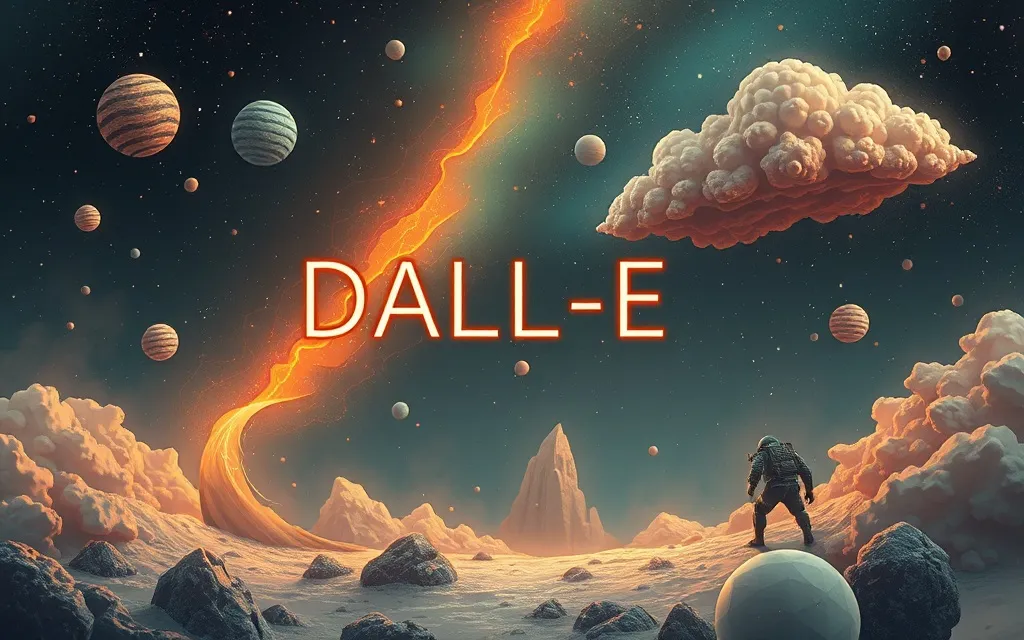
2024-11-22T04:00:00+00:00
In the fast-paced world of artificial intelligence, OpenAI's DALL-E stands out as a fascinating innovation transforming text into captivating images. By leveraging cutting-edge algorithms, DALL-E shatters traditional boundaries, allowing for the direct translation of textual ideas into visual art. This article unwraps the mysteries of DALL-E's technology, explores its diverse applications, and offers insights into its future trajectory in reshaping digital creativity.
DALL-E is the brainchild of OpenAI, conceived to transform text descriptions into intricate visuals. Powered by a sophisticated transformer architecture, it mimics human-like understanding and synthesis. The name DALL-E combines the whimsical creativity of Salvador Dalí and the technological marvel of Pixar's WALL-E, reflecting its unique blend of art and innovation.
Evolving since its 2021 debut, DALL-E has reached its third iteration, each enhancing its ability to interpret complex instructions with greater precision. This iterative refinement underscores OpenAI's dedication to authenticity in text-to-image generation, ensuring DALL-E remains ahead of the curve.
At its essence, DALL-E operates through a generative AI framework. Trained on vast corpora of images and textual descriptions, it learns to identify patterns, enabling the creation of unique images from user commands.
For instance, an input text like "a futuristic city at sunrise" leads to a dynamic visual that blends imagination with realism. The latest version, DALL-E 3, boasts improved textual comprehension, allowing users to witness their visions materialize with remarkable accuracy. Integrating DALL-E into platforms like ChatGPT enhances its reach, offering effortless access via conversational exchanges.
The versatility of DALL-E extends across numerous sectors. For creatives, it simplifies the making of concept art, prototypes, and exclusive visual content with little manual input. Professionals in graphic design use it to craft one-of-a-kind logos and brand visuals, while educators benefit from its ability to generate illustrative aids for teaching and innovation.
Beyond these areas, DALL-E is making strides in fashion design, envisioning novel clothing concepts from simple sketches, and in medical imaging, aiding in the visual interpretation of complex diagnostics through text descriptions.
While DALL-E's promise and potential are vast, it must navigate certain technological and ethical hurdles. Ensuring ethical usage, avoiding biases in data, and setting clear guidelines for content are critical responsibilities OpenAI manages vigilantly, prohibiting violent or politically sensitive imagery.
Despite its advanced capabilities, DALL-E's editing tools can be less precise with detailed modifications, necessitating multiple prompt attempts to refine outcomes—a facet OpenAI is consistently enhancing.
The journey of DALL-E is a paradigm shift in AI-driven creativity. With future enhancements in editing capacity and data efficiency, DALL-E will further redefine our interactions with AI in creative pursuits. OpenAI remains committed to transparency, evidenced by safety guidelines and exploring means like watermarking to distinguish AI-produced content ethically.
As the dialogue about AI's role in art and legalities continues, models like DALL-E promise to revolutionize how we synthesize imagery, solidifying their status as indispensable assets in our digital culture. How do you envision DALL-E impacting your field or hobby? Share your thoughts or try experimenting with DALL-E to explore untapped visual possibilities. Who knows what unique creations await?